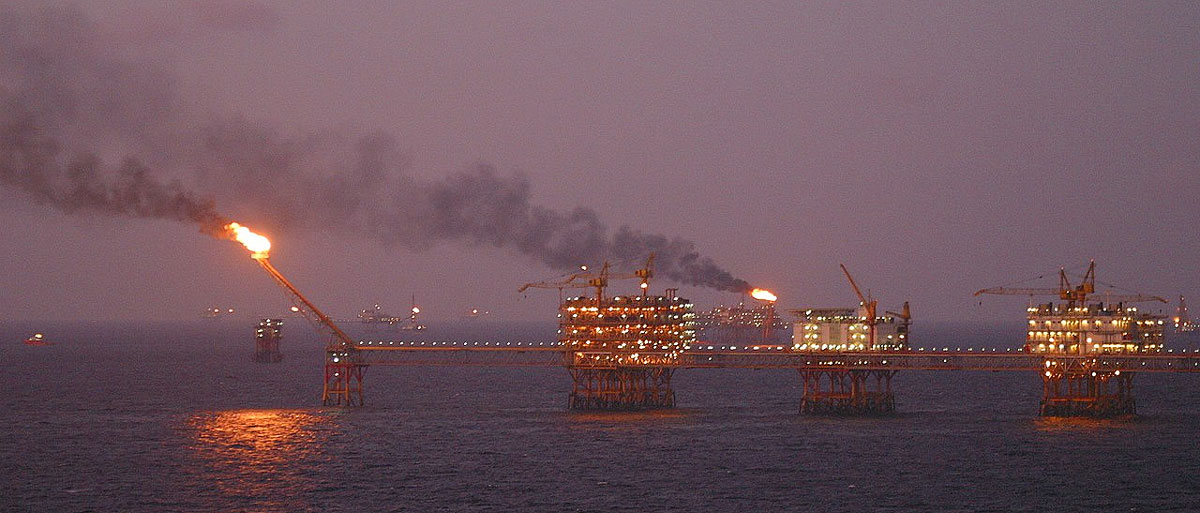Bildtext får vara max två rader text. Hela texten ska högerjusteras om den bara ska innehålla fotobyline! Photo: B. Christensen/Azote
SUSTAINABILITY THINKING
Current sustainability concepts too focused on resource limits rather than waste accumulation

A new paper in Environmental Research Letters investigates if the Planetary Boundaries framework is sufficiently different to previous sustainability concepts. One criticism is that it focuses too readily on limits to resources instead of waste accumulation, which is a root cause of unsustainability. Photo: Wikimedia Commons
- To ensure research leads humanity towards sustainable development, we need to think outside of the narrow box in which existing sustainability concepts reside
- The authors take a closer look at the Planetary Boundaries framework, one of the most popular and applied sustainability concepts over the past decade
- Current sustainability concepts such as Planetary Boundaries also focus too readily on limits to resources instead of waste accumulation, which is a root cause of unsustainability
Researchers dissect body of literature on existing frameworks such as Planetary Boundaries, and shed light on its shortcomings
In Greek mythology, Cassandra, a princess of Troy, was gifted with the ability to predict the future but cursed that she would never be believed. Although she warned of the invasion and fall of Troy, she was unable to prevent it.
Centuries later, it seems that scientists are faced with a similar dilemma: even though a centuries’ old and growing body of research points to the unsustainable nature of human impacts on the environment, the changes needed are yet to happen.
What can we learn from generations of sustainability concepts?
A paper published in Environmental Research Letters suggests that to overcome Cassandra’s dilemma, and ensure that research effectively leads humanity towards sustainable development, we need to think outside of the narrow box in which existing sustainability concepts reside.
In the paper, led by centre researcher Andrea Downing, the authors take a closer look at the Planetary Boundaries framework, one of the most popular and applied sustainability concepts over the past decade.
We investigate if the framework is sufficiently different to previous sustainability concepts to have the intended impact, and map how future concepts might make a difference.
Andrea Downing, lead author
Novel perspectives and solutions lacking
First launched in 2009, the Planetary Boundaries framework describes how humans can thrive within a “safe operating space” without endangering key earth system processes. However, crossing even one of these thresholds risks leading humanity into a “danger zone” where abrupt, unexpected change becomes the norm.
While the framework represents the culmination of centuries of work on the relationship between humans and their environment, novel perspectives and solutions are lacking.
For instance, the framework does not give answers to what is sustainable and what isn’t, nor does it explain how to achieve sustainability. It fails to represent and account for a diversity of people; contexts; needs and perspectives.
The root cause of unsustainability
Current sustainability concepts such as Planetary Boundaries also focus too readily on limits to resources instead of waste accumulation, which is a root cause of unsustainability.
The simple and intuitive conclusion then is that increasing waste treatment and reducing consumption rates might be more actionable and inducive than warning of resource limits.
Normative dimensions must also be explicit when framing future sustainable development narratives. There is no universal, one-size-fits-all solution.
“The global perspective, in which all of humanity would theoretically be safe under Holocene-like dynamics, possibly only reflects a form of retrogressive development, in which few people see an improvement to their well-being and livelihoods,“ the authors conclude.
Methodology
The authors first create a genealogy of the literature on which the Planetary Boundaries framework is built. In order to do so, the work cited in Rockström et al. as constituting the “three branches of inquiry” is selected. These branches of inquiry are: (a) the scale of human action in relation to the capacity of the Earth to sustain it, (b) understanding essential Earth system processes and (c) framing of resilience. The sources to the core ideas being developed in primary references are identified to build a comprehensive library of 58 direct and secondary references, and the relationship between them is analyzed.
In a second phase, the authors analyze seminal consumer resource models in terms not only of the common resource limits perspective, but also of its ‘flip-side’: minimum resource requirements. It is this flip-side that talks to the importance of distribution of resources. They then present a new Resource-Producer-Consumer-Waste (RPCW) model which deals with the shortcomings of the earlier seminal models. The aim of this new model is to explore dynamics and interactions of waste and resource limitation.
Downing, A., S., Chang, M., Kuiper, J.,J., Campenni, M., Häyhä, T., Cornell, S., Svedin, U., Mooji, W. 2020. Learning from generations of sustainability concepts. Environmental Research Letters, Accepted Manuscript









